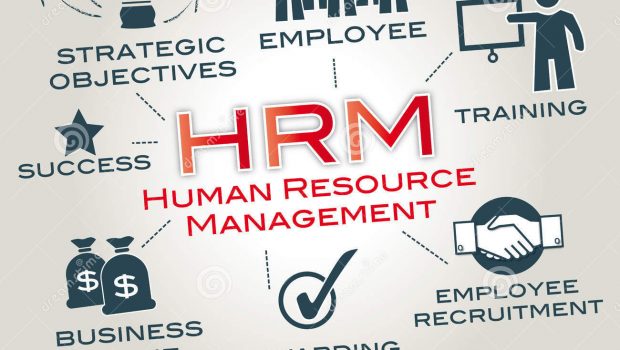Human resource operations have a substantial impact on an organization’s success. As a result, human resource management has become a prominent field of study. But what exactly does a human resource management education cover, and how important is it in the business world? Also, do you know the courses required for a degree in human resource management? Let us check it out in this post!
What is Human Resource Management (HRM)?
Human Resource Management is concerned with the principles, methods, and technology that are used to increase an organization’s productivity. HR professionals accomplish this by implementing strategies and policies that improve employee effectiveness. Employees or staff are also known as human capital, the lifeblood and most vital resource of most businesses.
Human Resources has numerous different focal areas:
- Recruiting and hiring
- Benefits and compensation
- Education and training
- Relations between employers and employees
- Organizational growth
Depending on your role and the size of the organization for which you work, your tasks may be limited to one or several areas.
Principles of Human Resource Management
According to business consultants, modern human resource management is influenced by numerous overarching principles. Perhaps the most fundamental premise is the basic awareness that human resources are an organization’s most valuable asset; a business cannot succeed unless this resource is adequately managed.
Another key principle articulated by Michael Armstrong in his book A Handbook of Human Resource Management is that business success “is most likely to be achieved if the enterprise’s personnel policies and procedures are closely linked with, and make a significant contribution to, the achievement of corporate objectives and strategic plans.”
A third guiding concept, with a similar breadth, maintains that it is the role of human resources to recruit, secure, guide, and develop workers whose abilities and desires are compatible with the company’s operating needs and future goals.
Other HRM aspects that create a corporate culture—whether by fostering integration and cooperation across the organization, adopting quantitative performance assessments, or taking some other action—are frequently cited as critical components in business success.
Key Responsibilities In Human Resource Management
Human resource management is concerned with the growth of individuals as well as the organizations in which they work. HRM, thus, is concerned not only with protecting and developing individual workers’ skills but also with implementing programs that improve communication and cooperation among those individual workers in order to foster organizational development.
Job analysis and staffing, organization and utilization of workforce, measurement and appraisal of workforce performance, implementation of reward systems for employees, professional development of workers, and workforce maintenance are the primary responsibilities associated with human resource management.
#1. Job Analysis
This entails determining the nature and responsibilities of distinct job positions, typically with the assistance of other firm departments. This can include determining the abilities and experiences required to function successfully in a position, identifying work and industry trends, and forecasting future employment levels and skill requirements.
“Job analysis is the cornerstone of human resource management practice because it provides valid information about jobs that are used to hire and promote people, set wages, determine training needs, and make other important HRM decisions,” wrote Thomas S. Bateman and Carl P. Zeithaml in Management: Function and Strategy.
Meanwhile, staffing is the actual process of managing the flow of workers into, within (by transfers and promotions), and out of a company. Following the completion of the recruiting phase of the staffing process, the selection is achieved through job ads, interviews, reference checks, testing, and other methods.
#2. Organization, Usage, and Maintenance
Another important aspect of HRM is the organization, usage, and maintenance of a company’s workforce. This entails creating an organizational framework that makes the best use of an enterprise’s human resources and building communication methods that allow the business to operate as a whole.
Other responsibilities in this area include worker safety and health, as well as employee-management interactions. Human resource maintenance operations connected to safety and health often require adherence to federal legislation that protects employees from workplace dangers. Several federal agencies, notably the Occupational Safety and Health Administration (OSHA) and the Environmental Protection Agency (EPA), as well as different state agencies, issue these regulations, which execute laws governing worker’s compensation, employee protection, and other areas.
Working with labor unions; addressing grievances relating to wrongdoing, such as theft or sexual harassment; and developing communication channels to create cooperation and a shared sense of goal among employees are the primary maintenance responsibilities connected to worker-management relations.
#3. Performance evaluation
The activity of reviewing employee work performance and offering feedback to those employees on both positive and negative elements of their performance is known as performance appraisal. Performance metrics are critical for both the company and the person because they are the primary data used in calculating salary increases, promotions, and, in the event of underperforming employees, dismissal.
#4. Rewards System
HR departments are usually in charge of reward schemes as well. This part of human resource management is critical because it is the method via which firms pay their employees with rewards for past accomplishments as well as incentives for future excellent performance. It is also the process via which organizations resolve issues within their workforce by instituting disciplinary measures. According to Gubman, aligning the workforce with company goals “means offering workers an employment connection that drives them to take ownership of the business plan.”
#5. Employee Education and Training
HR professionals must also be responsible for employee development and training. HR is in charge of studying an organization’s training requirements and developing and evaluating employee development programs to meet those requirements. These training programs might range from orientation programs designed to acquaint new personnel with the organization to ambitious education programs designed to educate employees with a new software system.
Meanwhile, responsibilities related to training and development activities include determining, designing, executing, and analyzing educational programs. The HRM professional should understand the basics of learning and motivation, as well as carefully plan and monitor training and development programs that benefit both the organization as a whole and the individual. The significance of this facet of a company’s operations cannot be emphasized.
#6. Contributions to business processes that are meaningful
Significant contributions to business processes are increasingly acknowledged as falling under the scope of active human resource management techniques. Of course, human resource managers have always contributed to overall business processes in some ways, such as spreading and monitoring employee behavior rules or ensuring that the corporation complies with worker-related regulatory guidelines.
Human resource managers are now being integrated into a growing range of other business operations. Human resource managers were traditionally positioned in a support role, with their opinions on cost/benefit reasons and other operational aspects of the business rarely sought. However, as Johnston pointed out, the changing nature of business structures and the marketplace are making it increasingly vital for business owners and executives to pay more attention to human resource aspects of the operation.
What Traits Do You Need to be an Excellent HR Manager?
The following are some crucial skills that HR practitioners should possess:
#1. Problem-solving Thinking
Many procedures are being replaced by computers, which increases the demand for talents that computers are not excellent at (skills that cannot be translated into codes), such as analyzing, assessing, and developing new ideas.
Fortunately, human intelligence is still required for this. Also, in Human Resources, the role of HR analytics is becoming increasingly crucial. When you utilize data and insights as the foundation for your advice and judgments as an HR business partner, you can persuade people more quickly.
#2. Collaboration with a variety of people
Employees are expected to be able to function in any context in a truly globalized society. This necessitates language abilities and adaptability, as well as the capacity to collaborate in a multicultural setting.
#3. Intelligence in social situations
In the future, more and more processes will be automated. Fortunately, computers still lag below human abilities in a number of areas, most notably social interaction and emotional comprehension.
That gets us to the third competency: social intelligence. HR professionals understand what various target groups want and what inspires them to act. It is critical to get to the heart of these target groups’ desires and requirements. Then you’ll be able to react promptly to their messages.
#4. Creativity
Creativity is required for an organization to stay ahead of the competition. As an HR generalist, you should be able to come up with new working methods, innovations, and unique ideas that will set the organization apart from the competition.
#5. Perspective on New Media
Understand how to use various communication channels. In the business world, user-generated content is becoming more prominent. Instead of static PowerPoint presentations, consider using movies, blogs, podcasts, and infographics.
The ideal employee for the next decade is “T” shaped: they have deep knowledge of at least one issue but are able to translate this knowledge into a broader variety of disciplines. As an HR Generalist, you must be knowledgeable with recruitment, salary, and benefits, as well as people management, training developments, legislation and regulations, and data analysis.
Human Resource Management Courses
If you seek a master’s degree in human resource management, you will gain a solid understanding of the following courses:
- Business acumen;
- Development of management and leadership;
- Coaching and mentoring;
- Employee relations management;
- Professional advancement;
- Design and development of organizations.
HR specialists demonstrate exceptional leadership abilities and boost an organization’s credibility. The human resource management process guarantees that the business sets a good example and that the firm’s actions are consistent with its goal.
HR manager’s Responsibilities and Duties
Human resource management can be divided into subsections, often by pre-employment and employment periods in a business organization, with an HR manager assigned to each. The following are some examples of HRM supervision areas:
- Recruiting, onboarding, and retaining employees
- Workforce management and talent management
- Job assignment and advancement in one’s career
- Benefits and compensation
- Compliance with labor laws
- Management of performance
- Development and training
- Planning for Succession
- Employee recognition and engagement
- Creating a Team
HR managers can benefit from the following skills:
- Employees Relationships
- Relationships with job candidates
- Recruiting and sourcing
- Management of interpersonal conflicts
- Onboarding of new employees
- Experience with HR software and information systems
- Management of performance
- Customer care
- Project management
Human Resource Management Software
Almost all sectors of Human Resource Management have sophisticated software that automates different degrees of many HR activities, as well as other capabilities like analytics. For instance, the number of software platforms and systems that enable both employers and job seekers to electronically link companies and people with each other and then aid manage the interviewing, hiring, and employment processes has increased dramatically.
While some Human Resource Management software solutions began on-premises, practically every element of HR technology, particularly HCM systems, is transitioning to cloud-based software as a service (SaaS) platforms.
Career Opportunities and Requirements in Human Resource Management
A bachelor’s degree is often required to begin a career in human resource management. Some institutions offer human resource management degrees, which can lead to entry-level HR employment. Another approach to get a position in human resource management is to get an undergraduate degree in a similar discipline, such as business administration. Furthermore, several years of experience in operations-heavy roles may be beneficial when transitioning into HR positions.
There are also HR-specific master’s degree programs to help create the requisite knowledge, skill sets, and qualifications for those who do not have a relevant undergraduate degree or transferable work experience.
Read Also: BUSINESS MANAGEMENT: Definition and Introduction Business Management Degrees
Popular International Study Destinations for a Human Resource Management Degree
We’ve compiled a list of the nations with the most Bachelor’s and Master’s degree in Human Resource Management.
- United States: The average tuition is 20,000 EUR per year.
- United Kingdom: The average tuition is 10,000 EUR per year.
- Canada: The average tuition is 10,000 EUR per year.
- Australia: The average tuition is 20,000 EUR per year.
- Germany: The average tuition is 7,000 EUR per year.
Human Resources Degrees Tuition Costs.
If you don’t want to spend so much money on your HR courses, there are less expensive possibilities, particularly in Europe. Examine the tuition costs for:
- HR Bachelors in Ireland: 3,000 EUR per year.
- HR Master’s Degree in the Netherlands: 2,100 EUR per year
- An HR Master’s Degree in Denmark: 0 EUR for EU/EEA students only
This is a high-level overview of tuition expenses. Human Resource Management programs can be found for less than 5,000 EUR each academic year in countries such as the United States, Canada, and others. Simply determine how much money you want to spend and use the criteria on our portals to exclude courses that aren’t a good fit for you.
PRO TIP: Always check to see if your country’s students are subject to tuition costs. Denmark is a prime example, as it provides free HR degrees to EU/EEA students solely. You will have to pay if you are from another country.
Duration of Human Resource Management Courses
How long does it take to earn an HRM diploma? It is determined by the degree:
- Bachelor’s degree in human resources – 3-4 years
- Master’s degree in human resource management – 1-2 years
Online HRM courses are similar in length, but you have the flexibility to study when and where you want.
Human Resource Management Degree Admission Requirements
Some of the most popular entry criteria for Human Resources Management study degrees are as follows:
- Bachelor of Science
- IELTS 6.0 or TOEFL 75 is the minimum English language test score.
- Diploma from a high school
- Academic achievements
- Recommendation letter
- Interview
- Master of Arts
- IELTS 6.5 or TOEFL 80 is the minimum English language test score.
- A bachelor’s degree in a comparable field (some unis accept degrees in unrelated subjects)
- Minimum grade point average
- Two recommendation letters
- Statement of purpose
- Experience at work (1-2 years)
- CV
The Advantages of Online Human Resources Degrees
Most people select an online Bachelor’s or Master’s degree in Human Resource Management because they want to focus on other responsibilities, such as working part-time or full-time, turning a hobby into a profitable business, or spending time with their family and children.
Whatever your reason for wanting to study HR online, here are some of the primary advantages:
#1. Save both time and money.
Studying abroad is a rewarding experience, but it is not necessarily inexpensive. Some nations and locations are less expensive than others, but studying abroad is typically more expensive than studying online.
You’ll save money on transportation and lodging, and you’ll save time commuting. In a society when many individuals lament not having enough time for themselves, an online human resource management degree may allow you to have the best of both worlds.
#2. Control your timetable.
You can study whenever and wherever you choose. To study online, all you need is a solid internet connection and a computer or a mobile device, such as a laptop, tablet, or even a smartphone if the smaller screen size isn’t an issue for you.
#3. Improve your digital abilities.
An online Human Resources management degree allows you to investigate the most recent venues for communication and file sharing. You may be familiar with the most common internet tools, but there are new apps and websites that can help you with your work. You may even recommend them to your coworkers if you believe they can boost communication and teamwork.
#4. Online degrees boost your resume.
Completing an online degree in Human Resource Management will be difficult, especially if you have other obligations such as full-time employment. However, if you can pull it off, it will be of big value to your Curriculum Vitae. It will demonstrate to potential employers that you are an ambitious person who can set objectives, identify the steps to get there, and do what is required to achieve.
Read Also: Human Resources Management (HRM): Definition, Outsourcing, and Functions
What can I accomplish with a Degree in Human Resource Management?
These are some of the most common careers available to those with an HRM degree. We’ve also included PayScale’s typical salary in the United States, as well as some of the primary activities and responsibilities. This will give you a better understanding of the abilities and expertise required for each role.
40,000 USD per year as a Human Resources Assistant
- Respond to employee emails, phone calls, and questions.
- Insert, update, and double-check data accuracy
- Organize meetings and appointments, as well as monitor HR schedules
Mediator – 57,000 USD per year
- Evaluate issues, talk to people, and try to figure out what is causing these problems.
- Facilitate dialogue between disputing parties.
- Collaborate with each party to reach an agreement that is acceptable and useful to both parties.
50,000 USD a year for a Human Resources Specialist
- Plan, organize, and carry out interviews with prospective personnel.
- Manage all of the documentation that new employees must read and sign.
- Answer queries about benefits, personal difficulties, and so on.
Manager of Training and Development – 75,000 USD per year
- Make, test, and enhance training manuals and other instructional materials.
- Determine training budgets, identify instructors, and prepare cost-benefit analyses.
- Oversee various activities relevant to the professional and personal growth of employees.
Human Resources Manager – USD 66,500 per year
- Create and facilitate the implementation of administrative human resource planning.
- Supervise the primary operations and tasks of the HR staff.
- Conduct annual salary, budget, work environment, and job satisfaction surveys.
Trends in Human Resource Management
Human resource management careers continue to be in high demand. The Wall Street Journal classified the “HR manager” job title as the 35th (out of 800) most promising potential, based on median pay in 2018 and expected job openings in 2028, in an examination of data supplied by the Bureau of Labor Statistics (BLS).
In general, the field of human resources is on the rise. Companies are increasingly recognizing the strategic impact that a strong human resources department can make and are investing accordingly. As a result, HR positions are in high demand. From 2018 to 2028, the number of HR manager job titles alone is predicted to expand by 7% in the United States. Furthermore, salary prospects remain favorable, with the median HR manager salary hovering around $113,000. The median salary for HR specialist positions is roughly $60,000.
Changes in Human Resource Management
Several business trends have had a considerable impact on the vast subject of HRM in recent years.
#1. New technological developments
These new technologies, notably in electronic communication and information dissemination and retrieval, have significantly altered the business landscape. Satellite communications, computers, and networking systems, fax machines, and other gadgets have all aided in the transformation of how businesses engage with one another and their employees. Telecommuting, for example, has become a very popular alternative for many workers, necessitating the development of new rules for this increasing subset of employees.
#2. Organizational Structure Changes
Organizational structure changes have also had an impact on the changing face of human resource management. The continued deterioration of manufacturing industries in the United States and other countries, along with the expansion of service industries in those countries, has altered the workplace, as has the fall in union participation in many industries (these two trends, in fact, are commonly viewed as interrelated).
Furthermore, organizational theories have evolved. Many businesses have abandoned or restructured their old, hierarchical organizational systems in favor of flatter management structures. According to HRM experts, this shift in responsibilities necessitated a reevaluation of job definitions, appraisal methods, and other aspects of personnel management.
#3. Globalization of the market
A third changing driver has been the rapid globalization of markets. This dynamic has increased competition for customers and jobs. The latter trend enabled some organizations to expect higher levels of performance from their staff while keeping compensation levels stable. Other recent developments in the nature of HRM include new management and operational theories such as Total Quality Management (TQM), rapidly changing demographics, and changes in health insurance and federal and state employment legislation.
How does HR measure and assess the effectiveness of HR programs and initiatives?
HR can measure the effectiveness of HR programs and initiatives by setting clear goals and objectives, collecting data and feedback from employees, and evaluating the results. This can involve tracking metrics such as employee satisfaction, retention rates, productivity, and compliance with HR policies and procedures. By regularly assessing the effectiveness of HR programs, HR departments can make improvements and ensure they are meeting the needs of the organization and its employees.
What is the role of HR in performance management?
HR plays a critical role in performance management by establishing performance standards and evaluating employee performance against these standards. This includes setting performance expectations, providing feedback and coaching, and conducting performance evaluations. HR departments can also help managers effectively communicate with employees, identify areas for improvement, and provide support to help employees reach their full potential.
How does HR manage employee development and career progression?
HR manages employee development and career progression by providing opportunities for skill development, career growth, and job advancement. This can include offering training and development programs, mentorship and coaching, and opportunities for professional development. HR also plays a role in identifying high-potential employees and helping them advance within the company.
How does HRM impact a company’s success?
HRM plays a critical role in a company’s success by attracting, developing, and retaining a talented and engaged workforce. Effective HRM practices can help create a positive work environment, improve employee morale and motivation, and increase productivity and profitability. HRM can also help a company stay compliant with employment laws, manage risk, and attract top talent.
What is the role of HR in employee relations and labor law compliance?
HR plays a critical role in managing employee relations and ensuring the company complies with relevant labor laws. This includes managing employee grievances, handling disputes, and providing support to employees. HR departments must also ensure that the company is compliant with relevant employment laws, such as those related to minimum wage, overtime pay, and anti-discrimination laws.
How does HR manage workforce planning and talent acquisition?
HR manages workforce planning and talent acquisition by anticipating future workforce needs, and developing strategies to attract and retain top talent. This may include developing job descriptions, conducting job analysis, creating recruitment and selection processes, and managing the onboarding process for new employees. HR departments can also use data and analytics to make informed decisions about workforce planning and talent acquisition.
Small Business and Human Resource Management
The human resource management requirements of a small business are not the same size or complexity as those of a huge corporation. When it comes to personnel recruiting and management in the world of small business, the stakes are indeed quite high. No business wants a slacker, incompetent, or dishonest employee.
However, a small business with a staff of a few dozen workers will be significantly more harmed by such an employee than a large corporation with hundreds of employees (or thousands). Nonetheless, according to Jill A. Rossiter, “most small business employers have no formal training on how to make hiring decisions.” “Most have no idea how long it takes or how much it costs.” All they know is that they require assistance in the shape of a “good” sales manager, “good” secretary, “good” welder, and so on. And they are aware that they require someone with whom they can collaborate and who is ready to put in the time to study the business and execute the job. It appears to be straightforward, but it isn’t.”
A small business owner should examine numerous factors before employing a new employee. When considering an increase in employee wages, the first step for a small business owner should be to honestly examine the organization’s current state. Are you using the current personnel effectively? Today’s production practices, are they efficient? Are you, as the owner, allocating your time wisely? According to Rossiter, “every staff turnover should be viewed as an opportunity to reconsider your organizational structure.”
Small businesses must also match the skills of prospective employees to the demands of the company. Efforts to control this can be far more effective if the small business owner commits time and energy to define the role and actively participate in the recruitment process.
Human Resource Management FAQ’s
Is HR management a good career?
Human Resources (HR) has frequently rated high on rankings of the top career possibilities. HR expert is ranked #17 on U.S. News & World Report’s list of Best Business Jobs and one of the 100 Best Jobs overall for 2020.
What is the main role of HR?
In its most basic form, the HR (Human Resources) department is a group in charge of managing the employee life cycle (i.e., recruiting, hiring, onboarding, training, and terminating people) as well as administering employee benefits.
Is HR a stressful job?
According to a UK Youth research, young adults spend more than six hours a day “stressed out,” but one in ten feel they have no one to talk to about their issues. And now, according to a new poll of stress levels in the United Kingdom, Human Resources (HR) is the most stressful occupation.
Related Articles
- The Importance of Resources for the Success of Any Business
- BUSINESS ADMINISTRATION: Definition and Career Overview
- Human Resources Management (HRM): Definition, Outsourcing, and Functions
- BUSINESS MANAGEMENT: Definition and Introduction Business Management Degrees
- FINANCIAL RESOURCES: 7 Best Sources too look out for in 2021 (+ Detailed Guide)






